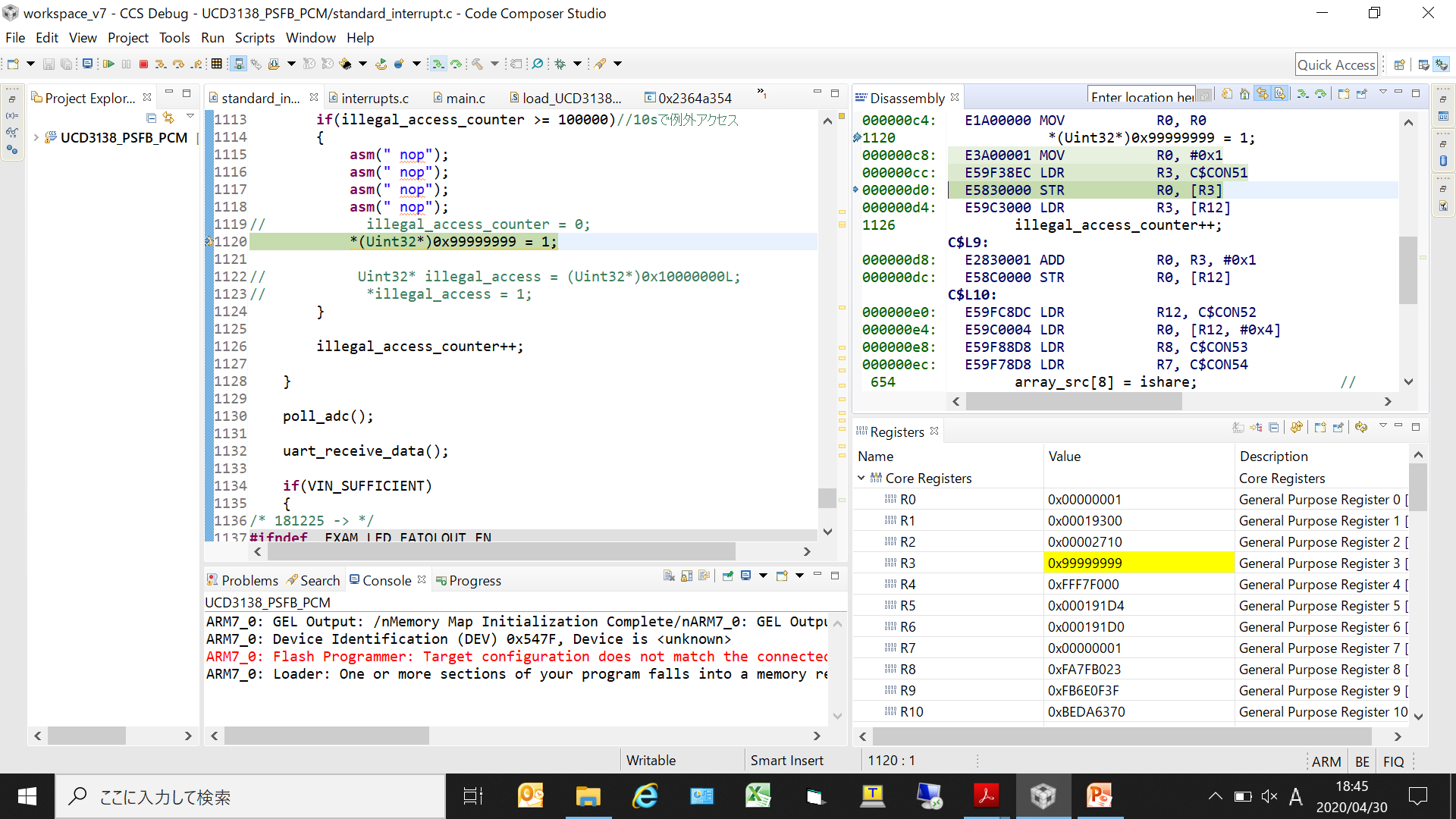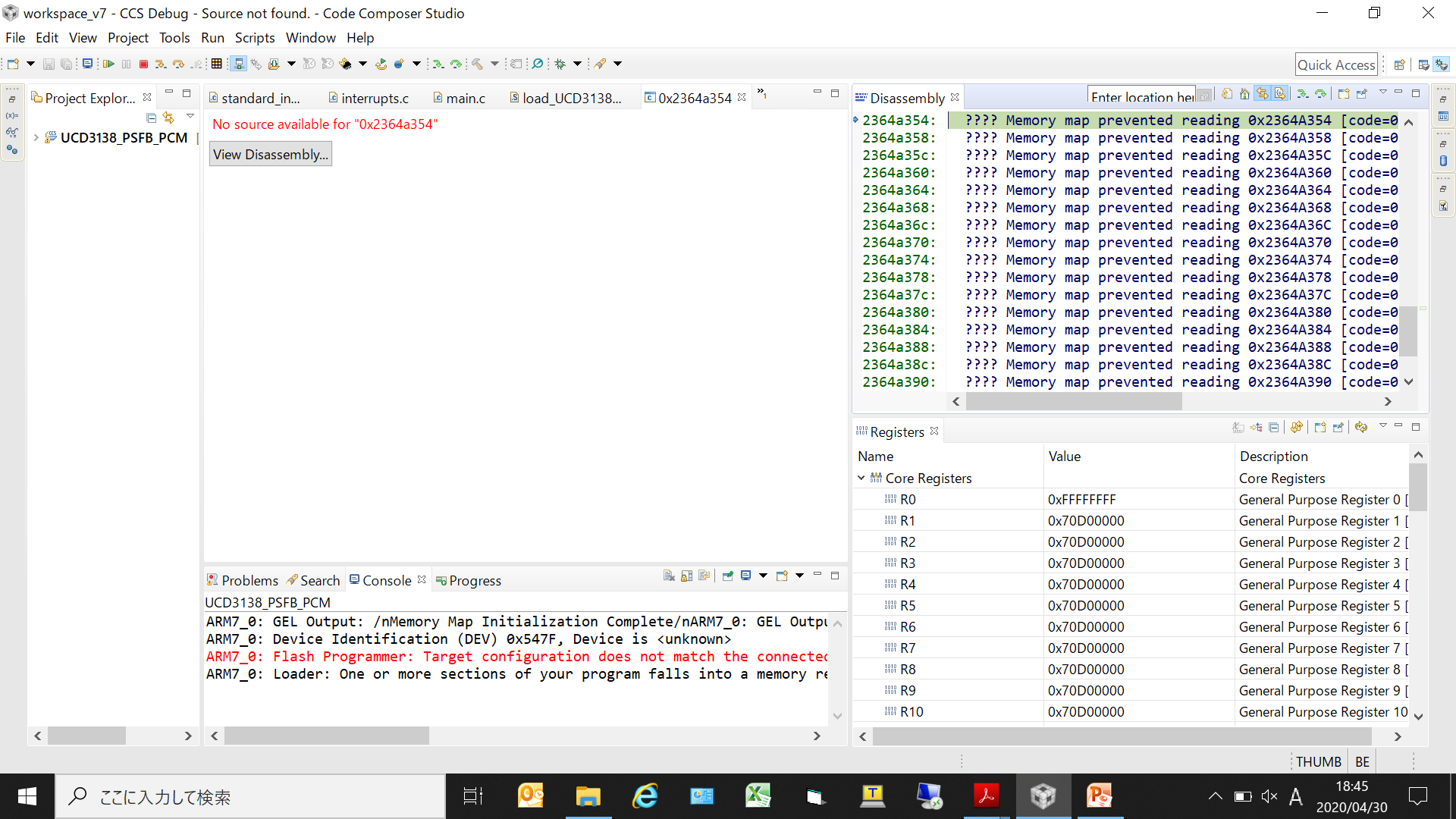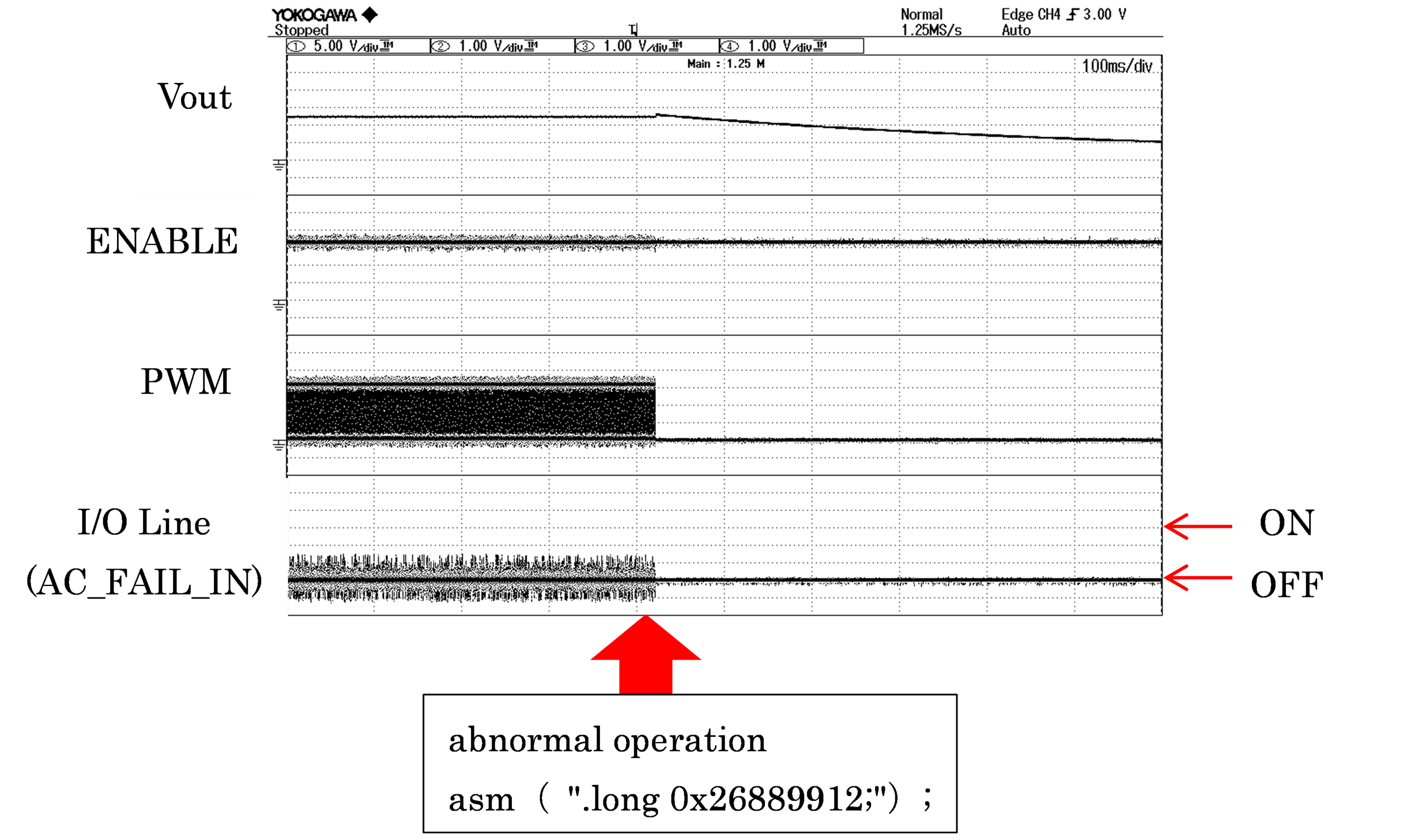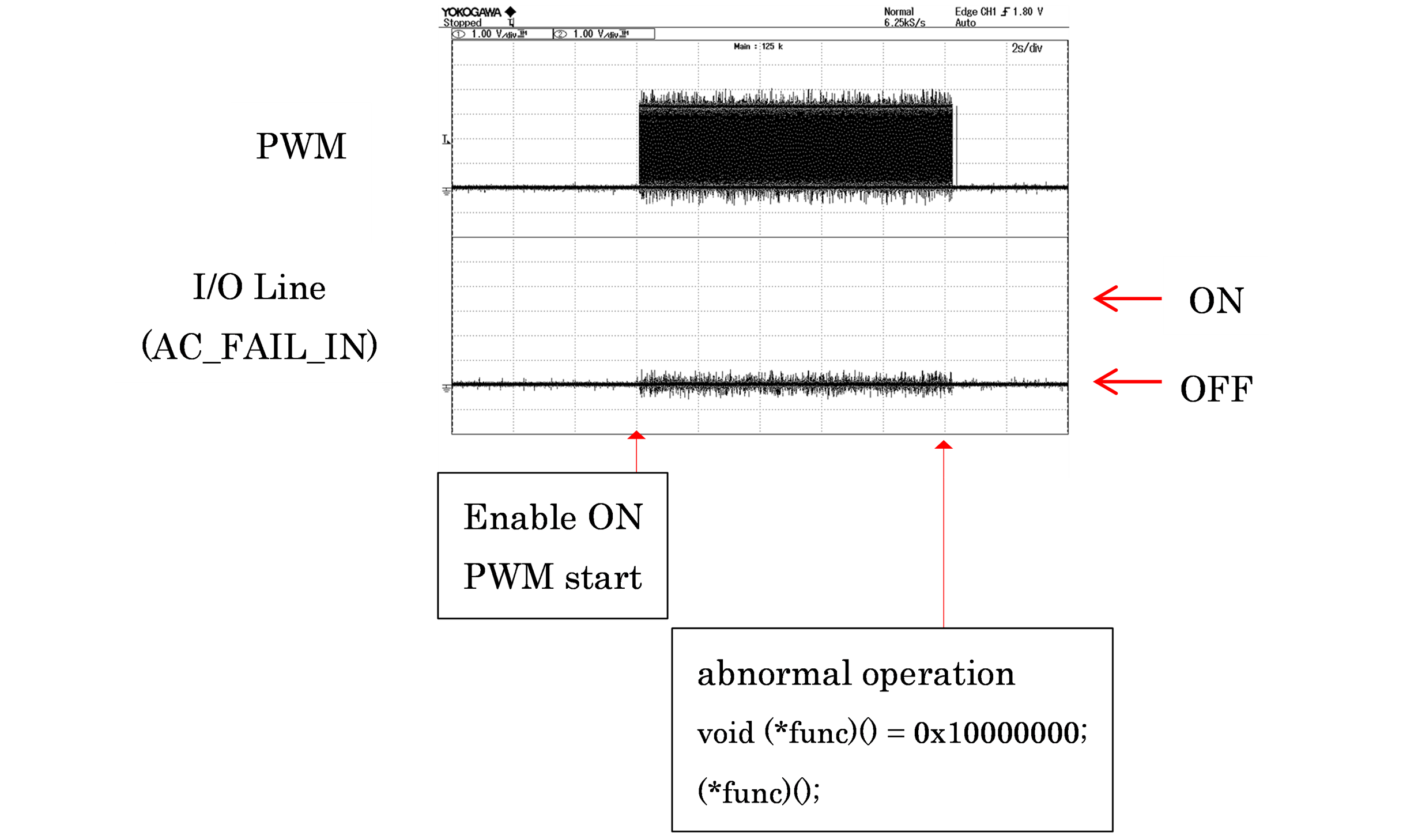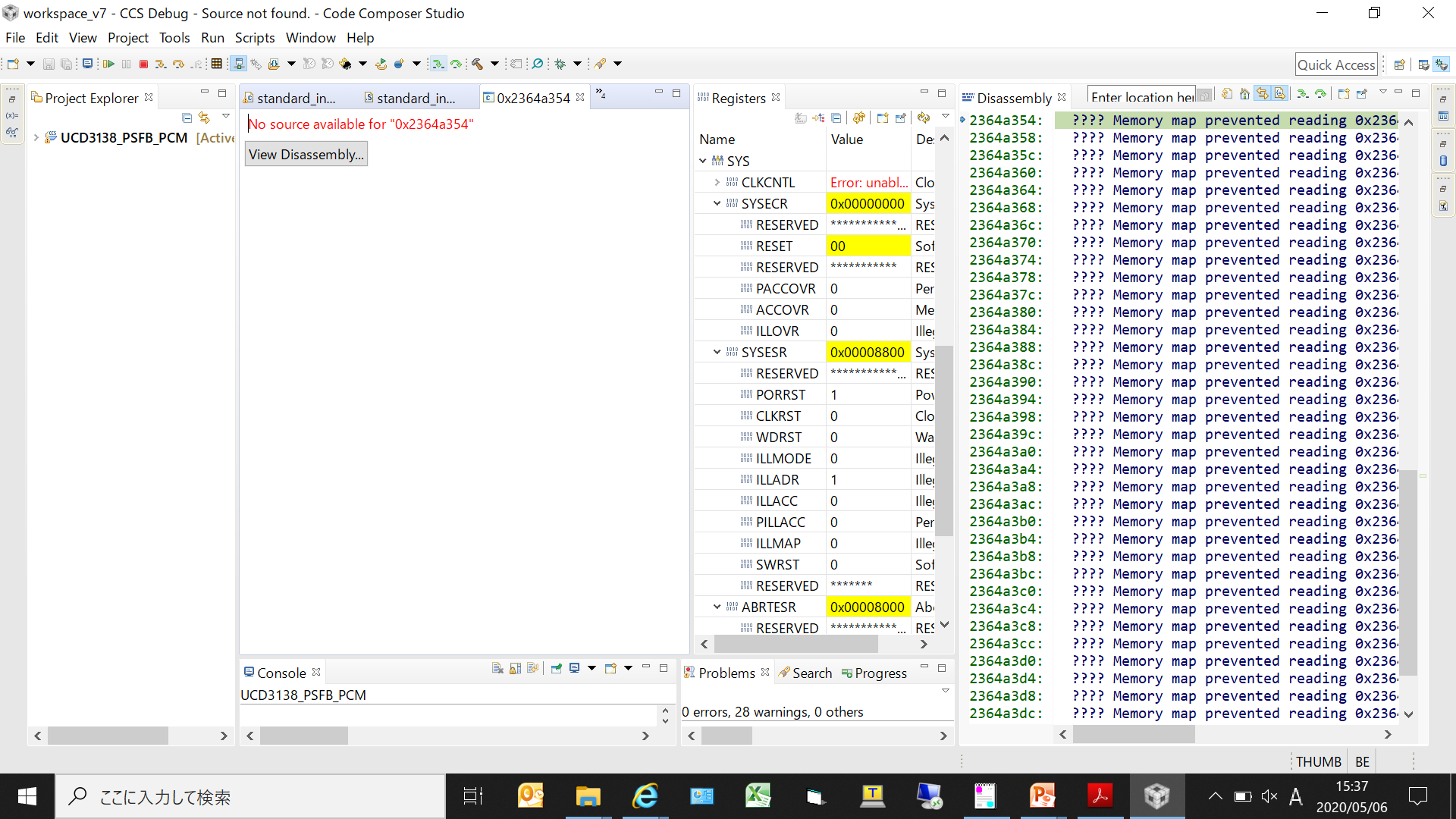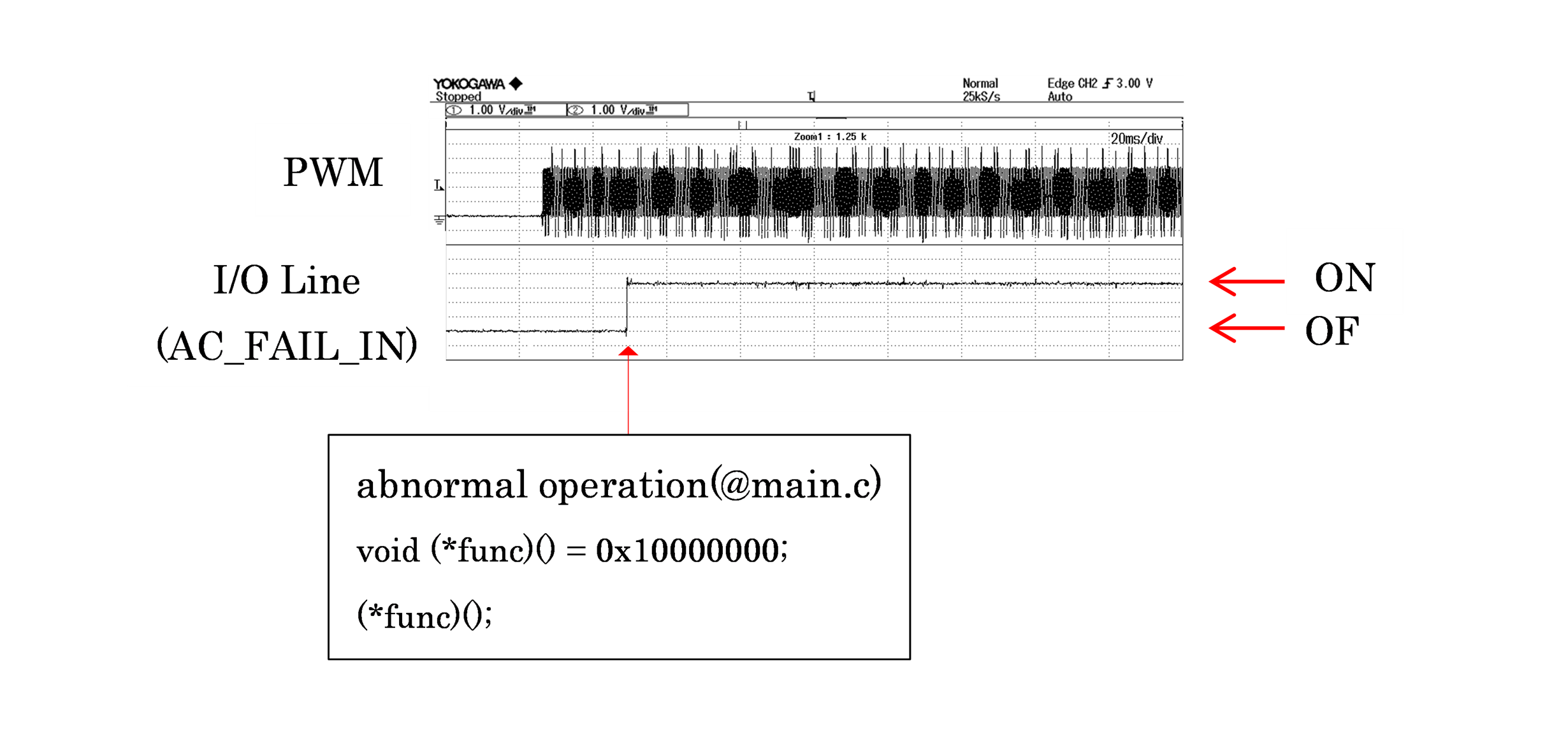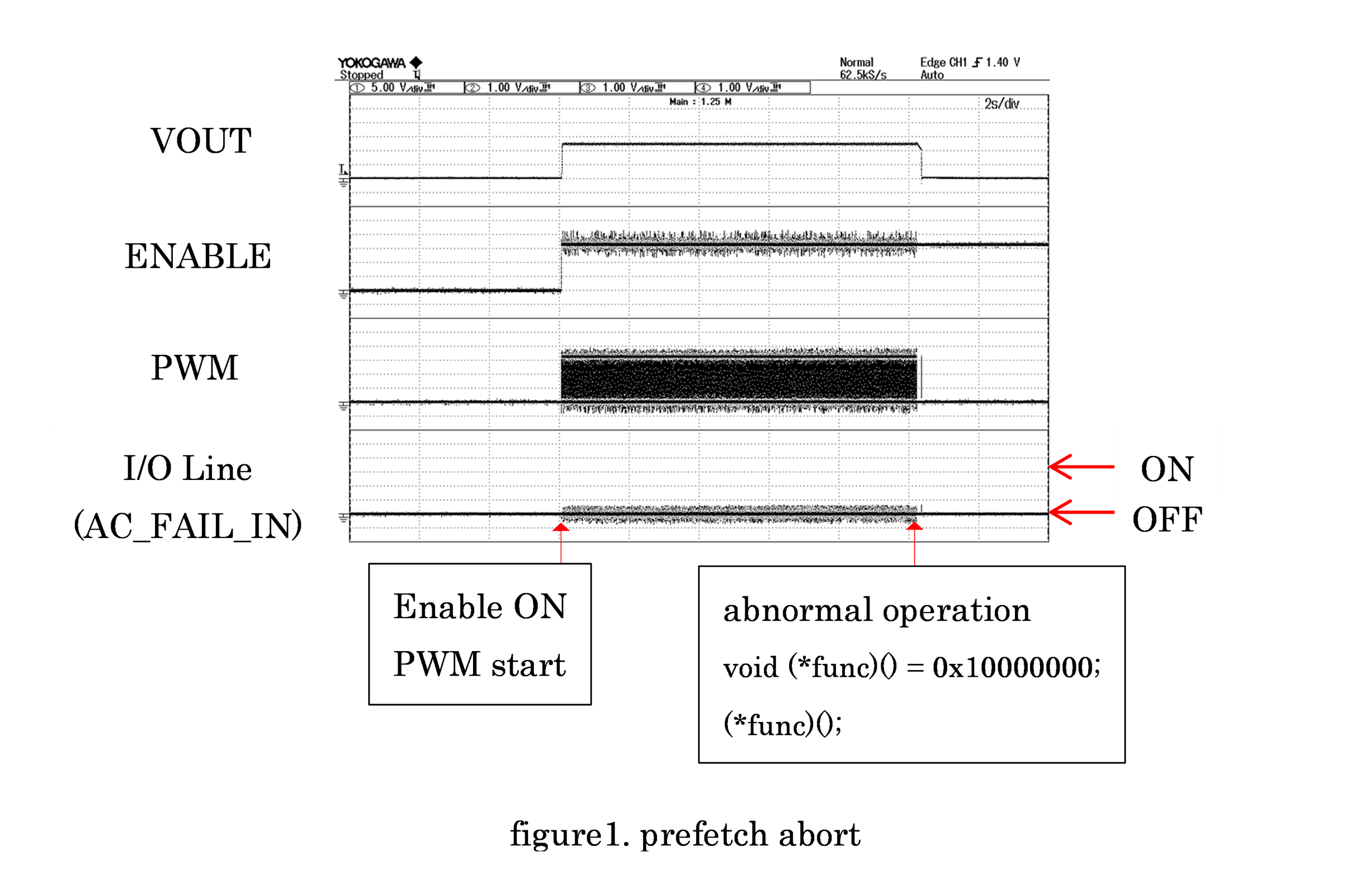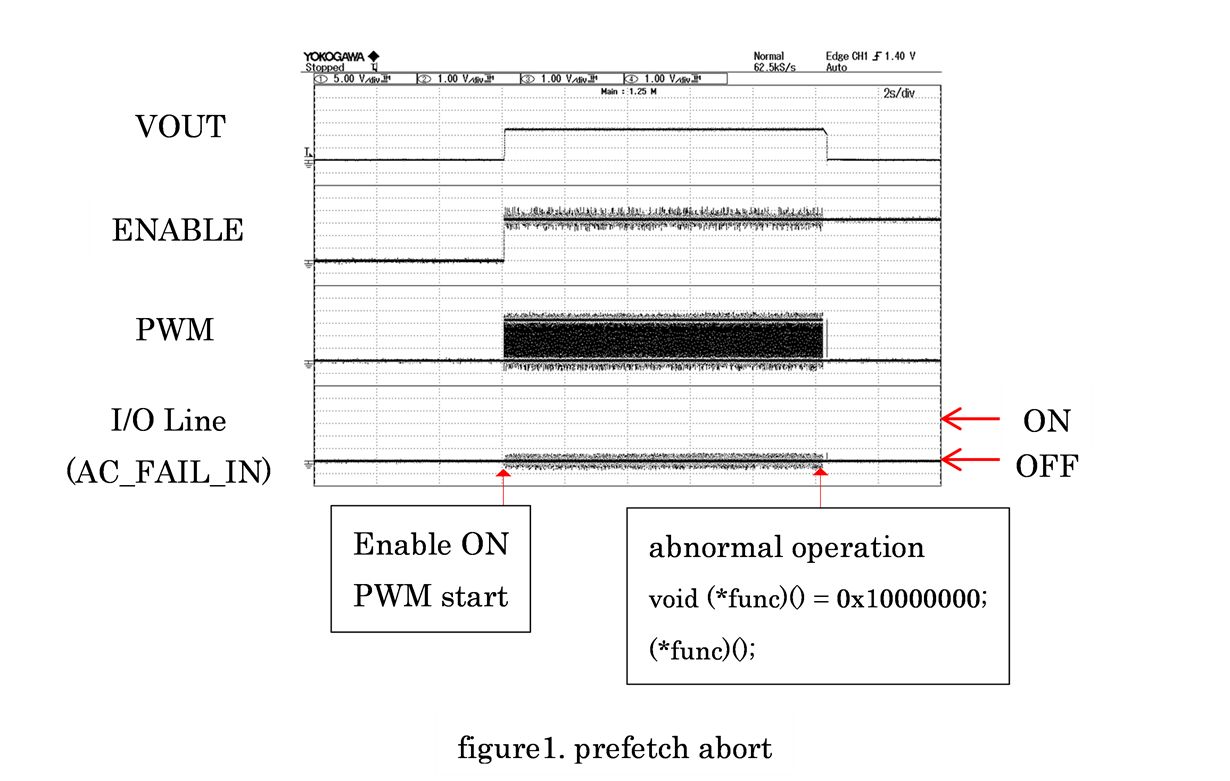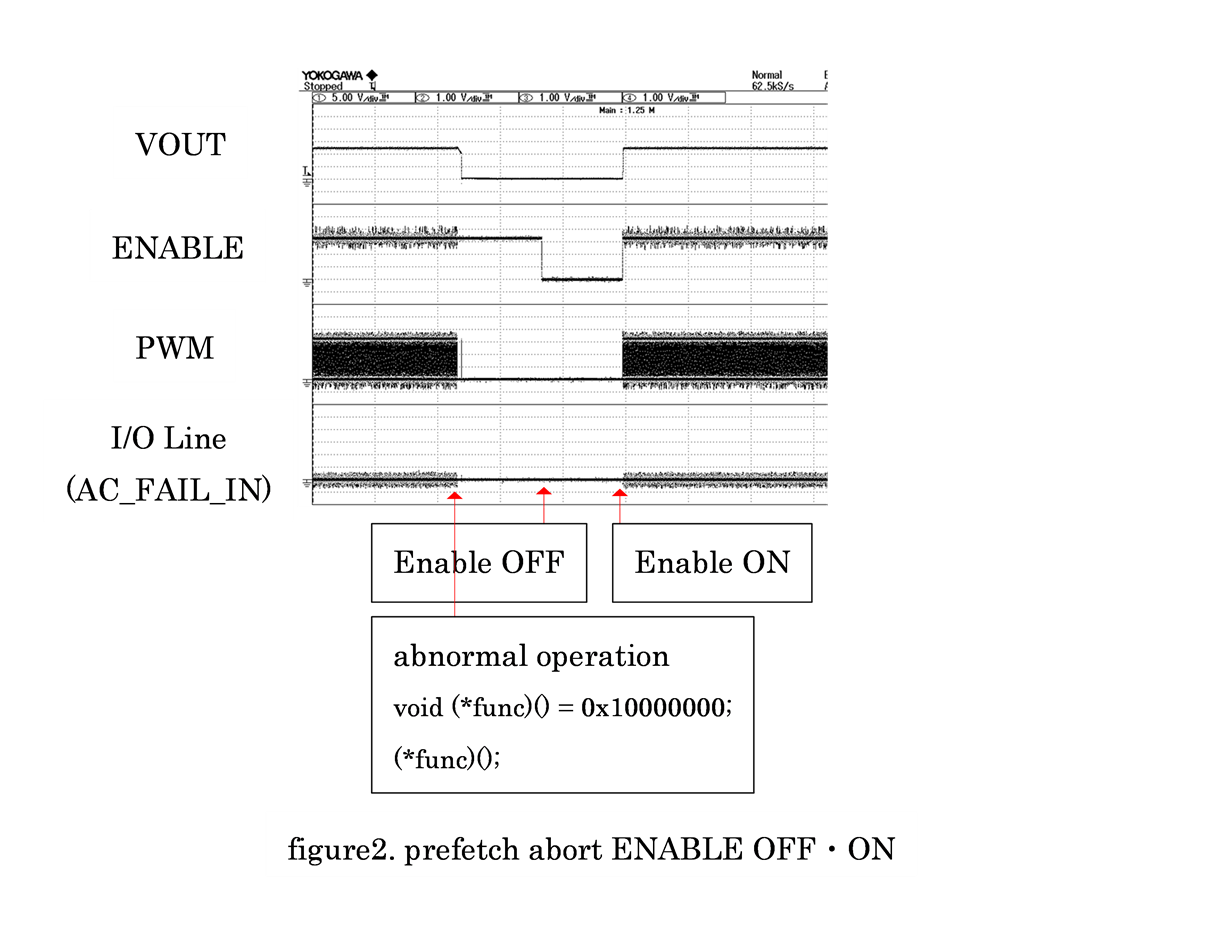Tool/software: Code Composer Studio
Hello!
The following code was added to standard_interrupt.c in order to intentionally cause an abort process as a confirmation when an error is detected.
*(Uint32*)0x99999999 = 1;
Then, I used the debugger to perform step execution at the assembler level.
The following screen was displayed.
The following figure shows the result of Assembly Step conducted once.
I think that interrupt processing of data abort will occur, but what is happening?
Also, please tell me how to intentionally cause the following three abnormalities:
・Data abort
・Prefetch abort
・Undefined exception
best regards.


